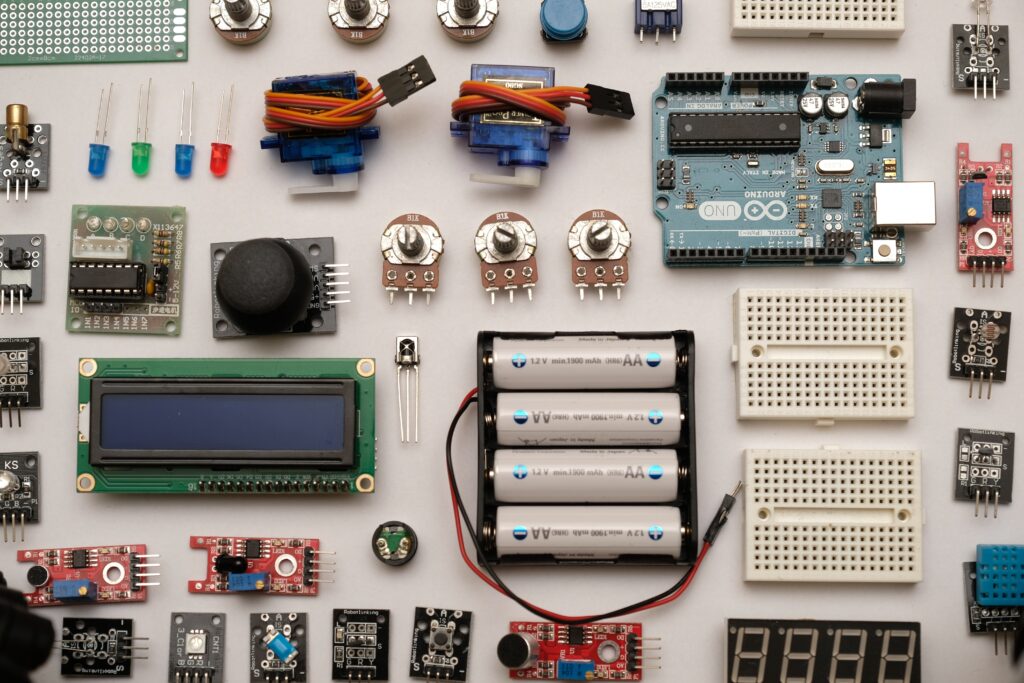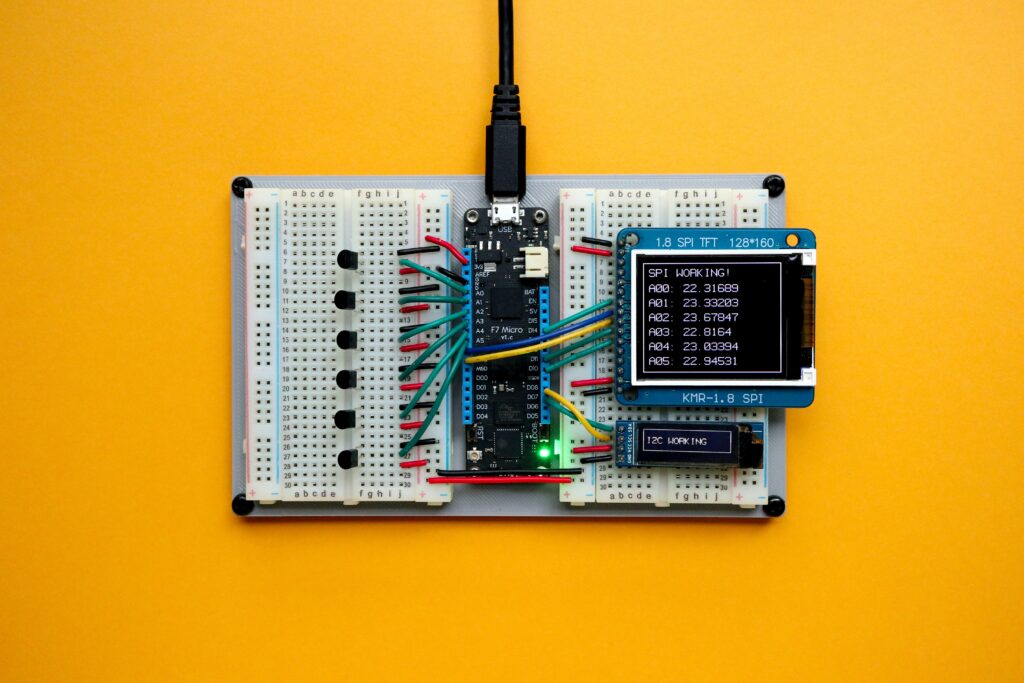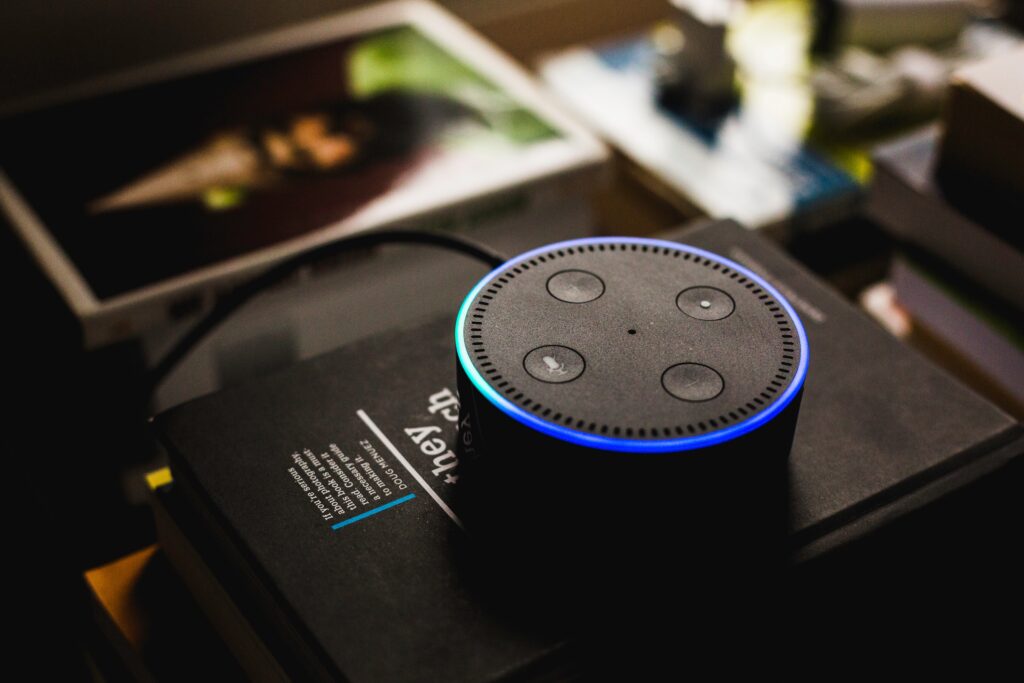The Internet of Things (IoT) is a network of physical objects that are embedded with sensors, software, and other technologies for the purpose of connecting and exchanging data with other devices and systems over the internet. IoT devices are becoming increasingly common in our homes, businesses, and cities, and they are used for a wide range of applications, including:
- Smart home: IoT devices can be used to control and automate our homes, such as smart thermostats, lights, and appliances.
- Wearables: IoT devices can be worn on our bodies to track our fitness, health, and location, such as smartwatches and fitness trackers.
- Industrial IoT (IIoT): IoT devices are used in industries such as manufacturing and agriculture to improve efficiency, productivity, and safety.
- Smart cities: IoT devices are used in cities to improve energy, and waste management.
5 IoT devices examples

Here are five examples of IoT devices:
1. Smart thermostats
Smart thermostats can learn your heating and cooling preferences and adjust the temperature of your home accordingly. This can help you save money on your energy bills and make your home more comfortable.
2. Smart doorbells
Smart doorbells allow you to see and speak to visitors at your door even when you’re not home. You can also receive alerts on your smartphone when someone is at your door.
3. Smart speakers
Smart speakers such as Amazon Echo and Google Home allow you to control your smart home devices, play music, get news and weather updates, and more using voice commands.
4. Smart light bulbs
Smart light bulbs can be controlled remotely using your smartphone or tablet. You can also set them to turn on and off automatically at certain times of day or when you enter and leave your home.
5. Smart locks
Smart locks allow you to lock and unlock your door using your smartphone, PIN code, or fingerprint. You can also receive alerts on your smartphone when your door is locked or unlocked.
Benefits of using IoT devices

There are many benefits to using IoT devices, including:
- Convenience: IoT devices can make our lives more convenient by automating tasks and allowing us to control our devices remotely.
- Efficiency: IoT devices can help us to be more efficient in our use of energy and resources.
- Safety: IoT devices can help to improve our safety by monitoring our surroundings and alerting us to potential hazards.
- Sustainability: IoT devices can help us to live more sustainably by reducing our environmental impact.
Challenges of using IoT devices

There are also some challenges associated with using IoT devices, including:
- Security: IoT devices can be vulnerable to cyberattacks, so it is important to take steps to protect them, such as using strong passwords and keeping software up to date.
- Privacy: IoT devices can collect a lot of data about us, so it is important to be aware of how this data is being used and to take steps to protect our privacy.
- Complexity: IoT devices can be complex to set up and use, especially for people who are not tech-savvy.
Conclusion
IoT devices are becoming increasingly common in our lives, and they offer a wide range of benefits. However, it is important to be aware of the challenges associated with using IoT devices and to take steps to mitigate them.
FAQs
FAQ 1: What are the benefits of using IoT devices?
IoT devices can offer a wide range of benefits, including:
- Convenience: IoT devices can make our lives more convenient by automating tasks and allowing us to control our devices remotely.
- Efficiency: IoT devices can help us to be more efficient in our use of energy and resources.
- Safety: IoT devices can help to improve our safety by monitoring our surroundings and alerting us to potential hazards.
- Sustainability: IoT devices can help us to live more sustainably by reducing our environmental impact.
FAQ 2: What are the challenges of using IoT devices?
There are also some challenges associated with using IoT devices, including:
- Security: IoT devices can be vulnerable to cyberattacks, so it is important to take steps to protect them, such as using strong passwords and keeping software up to date.
- Privacy: IoT devices can collect a lot of data about us, so it is important to be aware of how this data is being used and to take steps to protect our privacy.
- Complexity: IoT devices can be complex to set up and use, especially for people who are not tech-savvy.
FAQ 3: How to choose the right IoT devices for my needs?
When choosing IoT devices for your needs, it is important to consider the following factors:
- Compatibility: Make sure that the IoT devices you choose are compatible with your existing devices and systems.
- Features: Consider the features that are important to you, such as remote control, automation, and security.
- Budget: IoT devices can range in price from a few dollars to several hundred dollars. Set a budget before you start shopping.
- Brand reputation: Choose IoT devices from reputable brands.
FAQ 4: How to set up and use IoT devices?
The specific steps for setting up and using IoT devices will vary depending on the device. However, most IoT devices will require you to connect to your Wi-Fi network and create an account with the manufacturer. Once you have set up your IoT devices, you can typically control them using a smartphone app or a web interface.
FAQ 5: What is the future of IoT?
The future of IoT is very bright. As IoT devices become more affordable and easier to use, they are expected to become increasingly common in our homes, businesses, and cities. IoT is also expected to play a major role in the development of new technologies, such as self-driving cars and smart cities.

